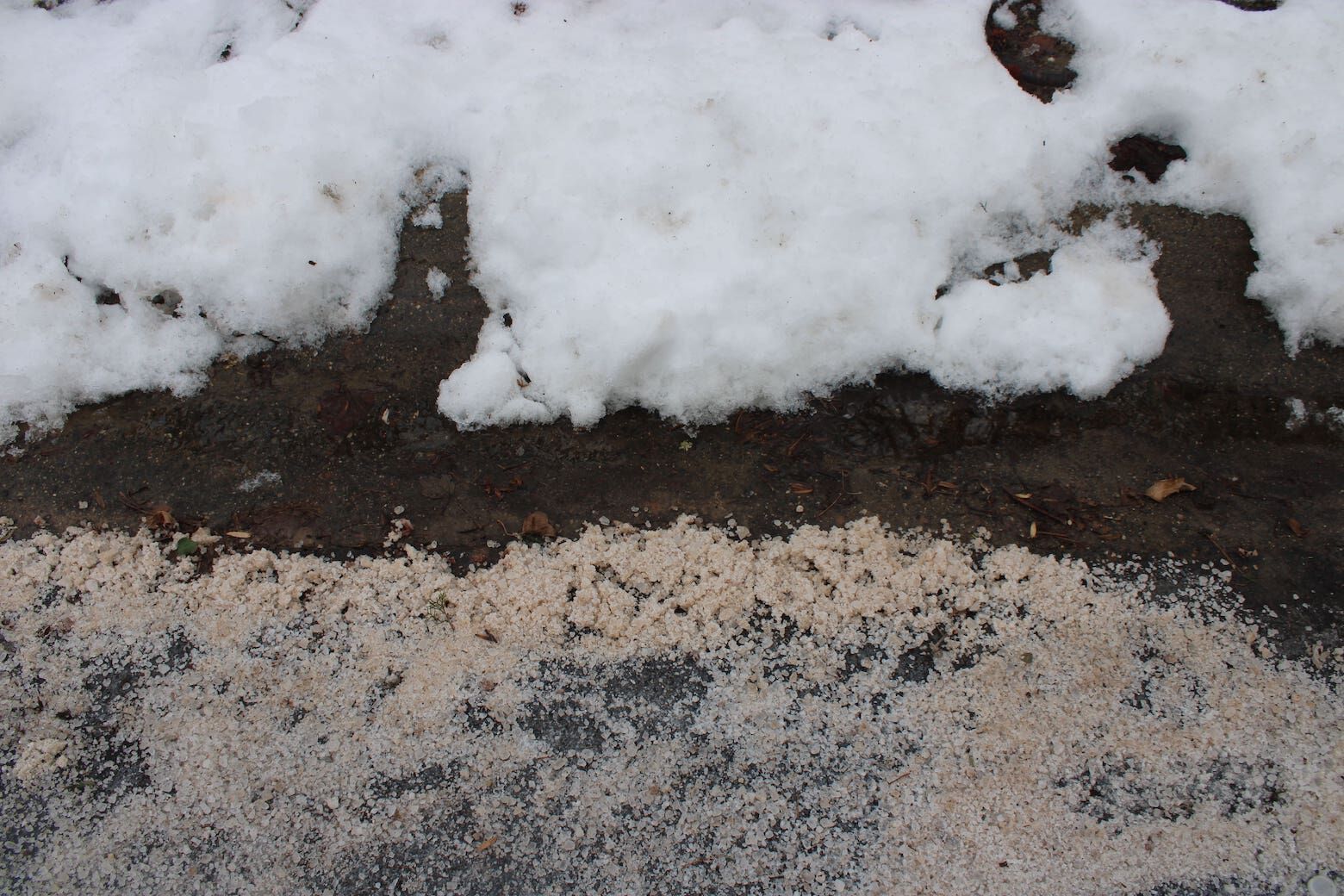
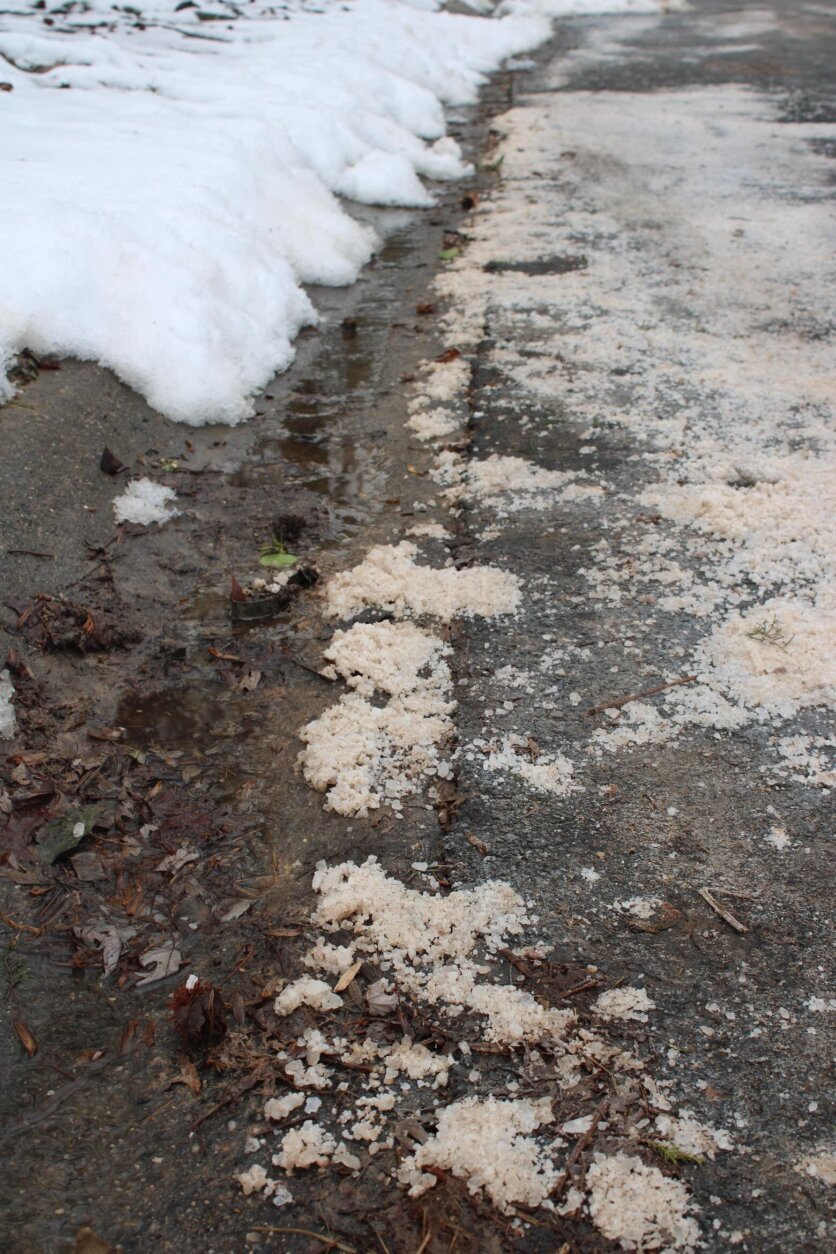
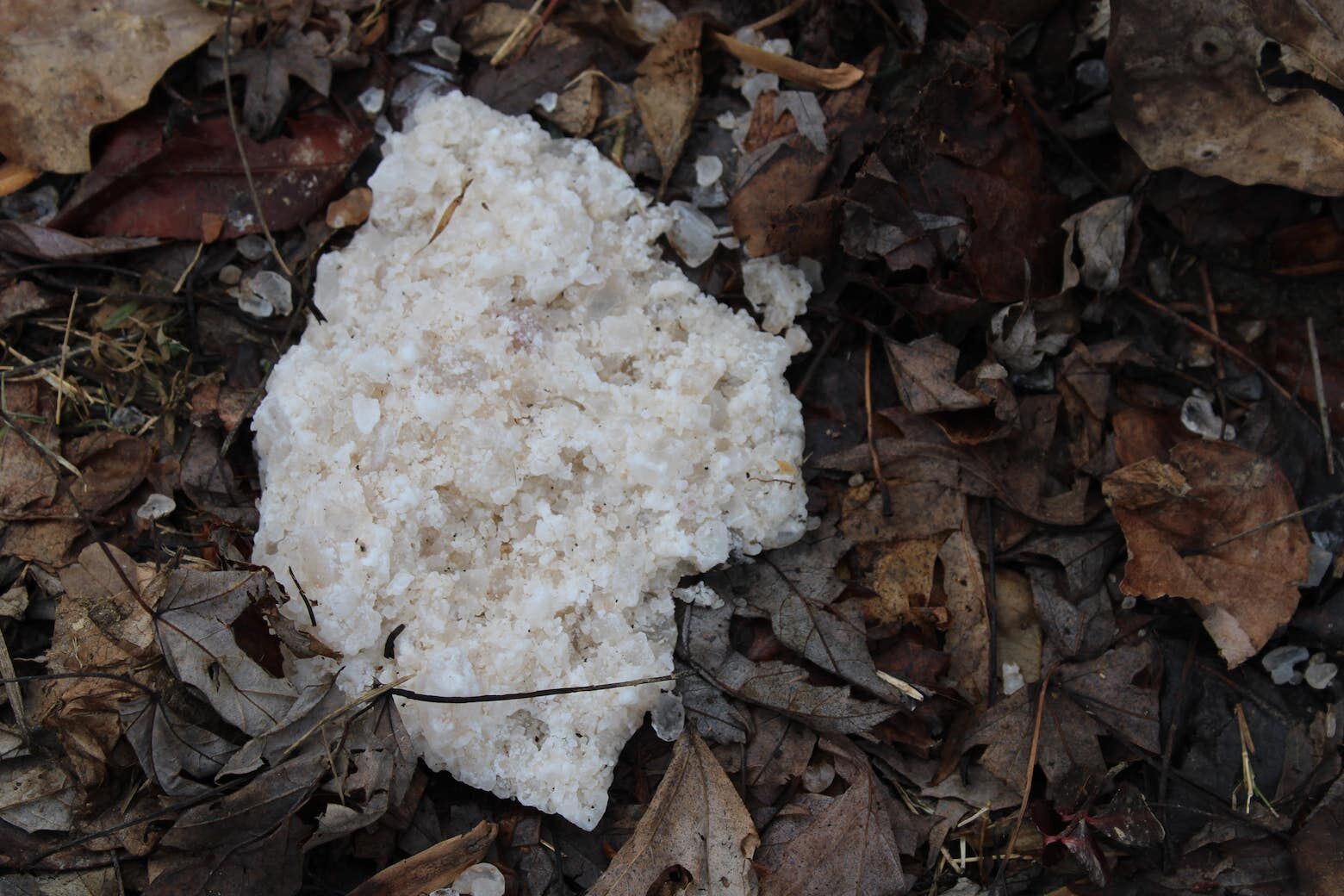
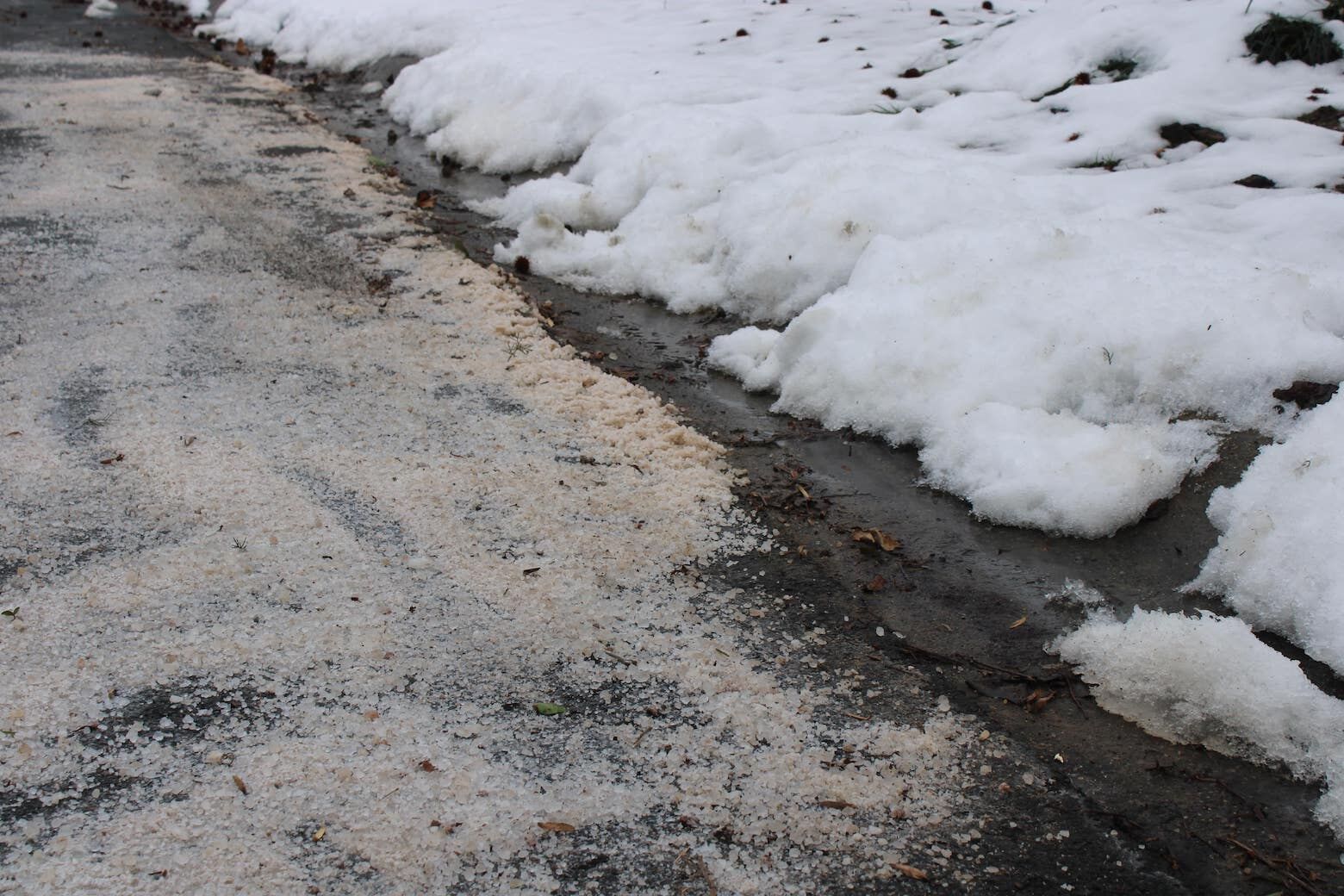
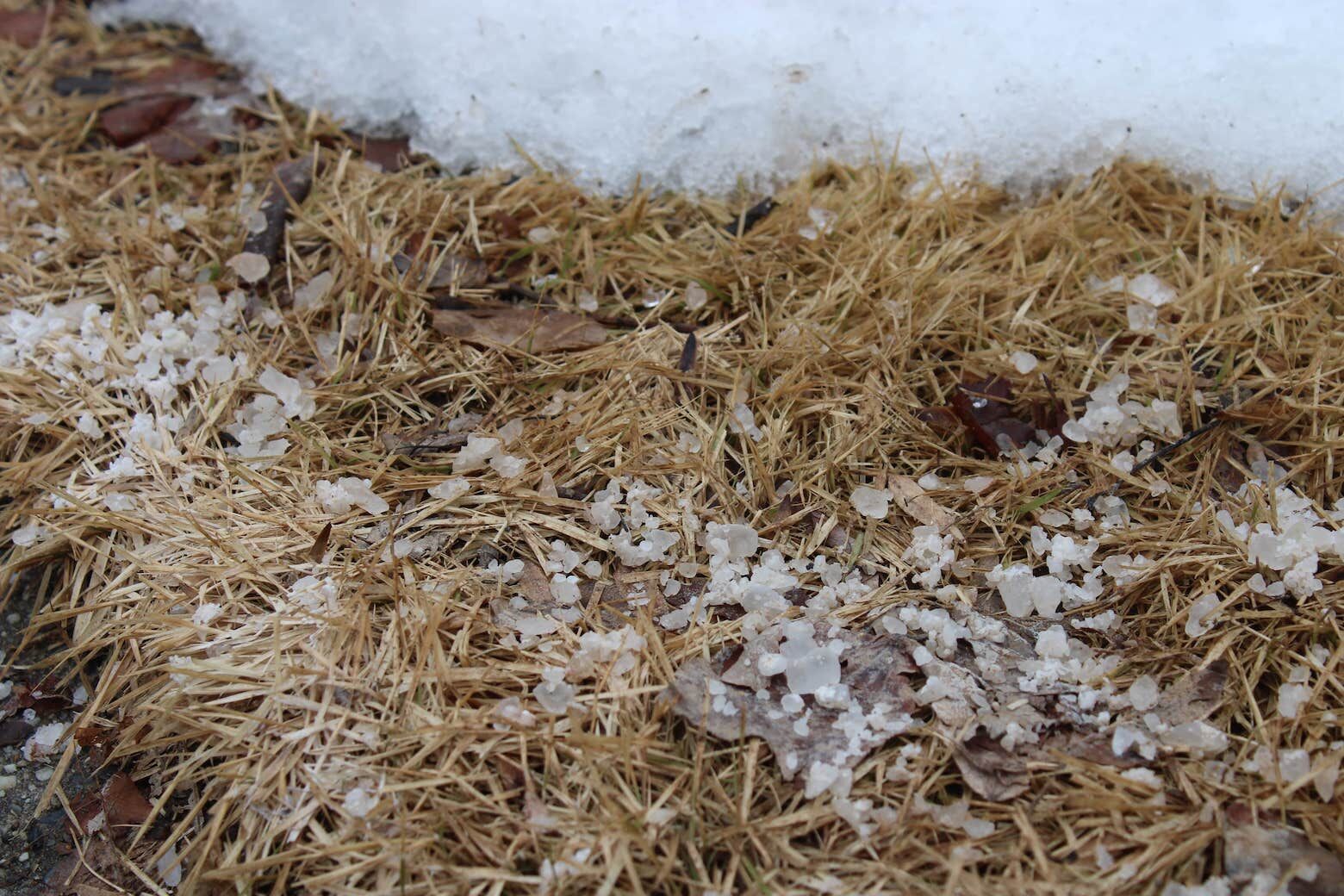
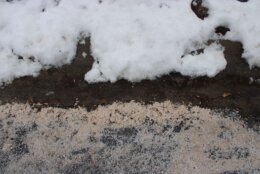
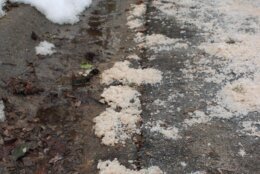
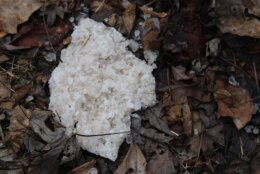
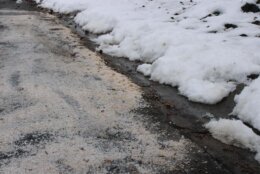
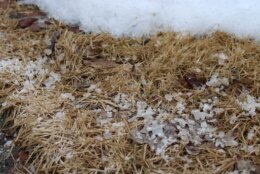
The salt applied to roads and walkways to help make them safe and drivable during last week’s snowfall is now potentially putting wildlife at risk as it’s washed into D.C.-area waterways.
The Chesapeake Bay Foundation is calling it “a perfect storm” for excess salt entering streams and rivers.
“As we have the snow pile up, plows moving it around, you get these pretty big piles of snow that are full of that road salt,” said Chesapeake Bay Foundation scientist Gussie Maguire. “When we have one of these big rainfall, flushing events immediately afterwards, all that rain just melts down, pushes the snow, the dirty ice, and all that rock salt and other normal road pollutants just straight down into our streams and waterways.”
Not only does this create the potential for salt to contaminate drinking water, but Maguire said spikes in salinity can have a detrimental impact on the environment of waterways, including the Chesapeake Bay.
“In our rivers and streams, we have critters that like to be in freshwater, the salt is not for them,” Maguire said. “Things like brook trout really need freshwater, lots of our little critters that live in the streams, the macro invertebrates that are so important to the food chain and other functions in the stream. They can be really sensitive to changes in salinity.”
She said it can affect infrastructure as well by deteriorating pipes.
Local governments are working to address the impact.
“Maryland Department of the Environment is working with the department of transportation to try and have smart strategies to make sure that we’re not over salting,” Maguire said. “Also you have to pay for salt. So it is helping deal with that financial side of things, too.”
There are things people can do to help out, including getting out there to help remove snow.
“People use the salt to melt the packed down ice a lot of the time,” Maguire said. “And the way you avoid that is you just get out and you shovel a little bit earlier.”
She said to be aware of the amount of salt that you’re putting down.
“A little coffee cup covers enough for, I want to say 10 pavement blocks to get a sufficient salt effect,” Maguire said. “You really don’t need a lot. A little goes a long way.”
Get breaking news and daily headlines delivered to your email inbox by signing up here.
© 2024 WTOP. All Rights Reserved. This website is not intended for users located within the European Economic Area.








